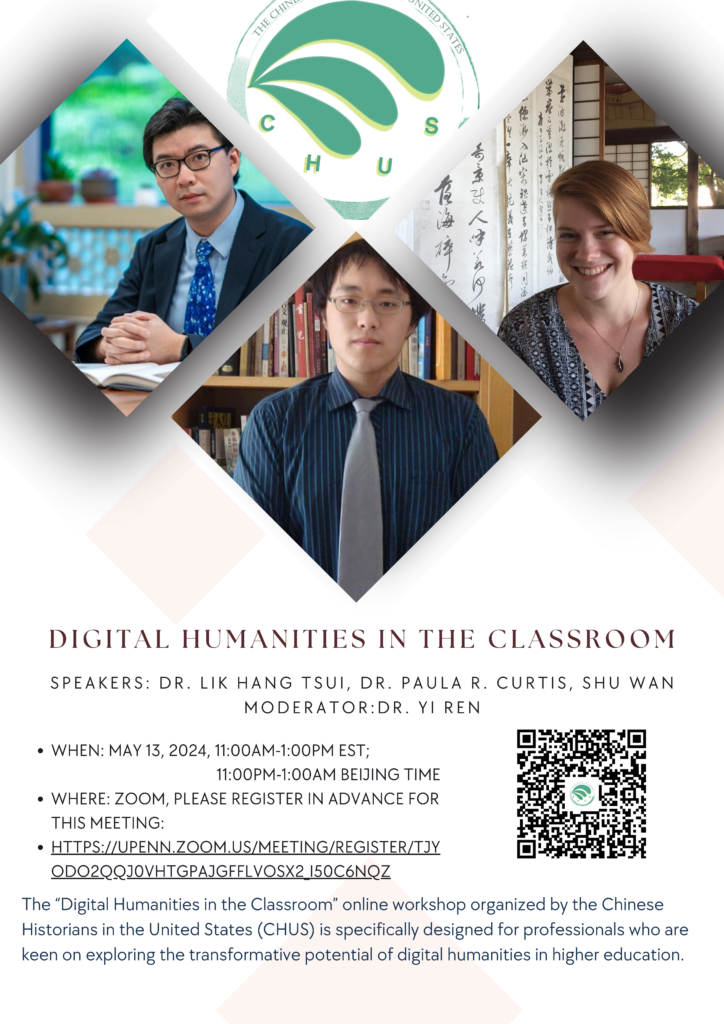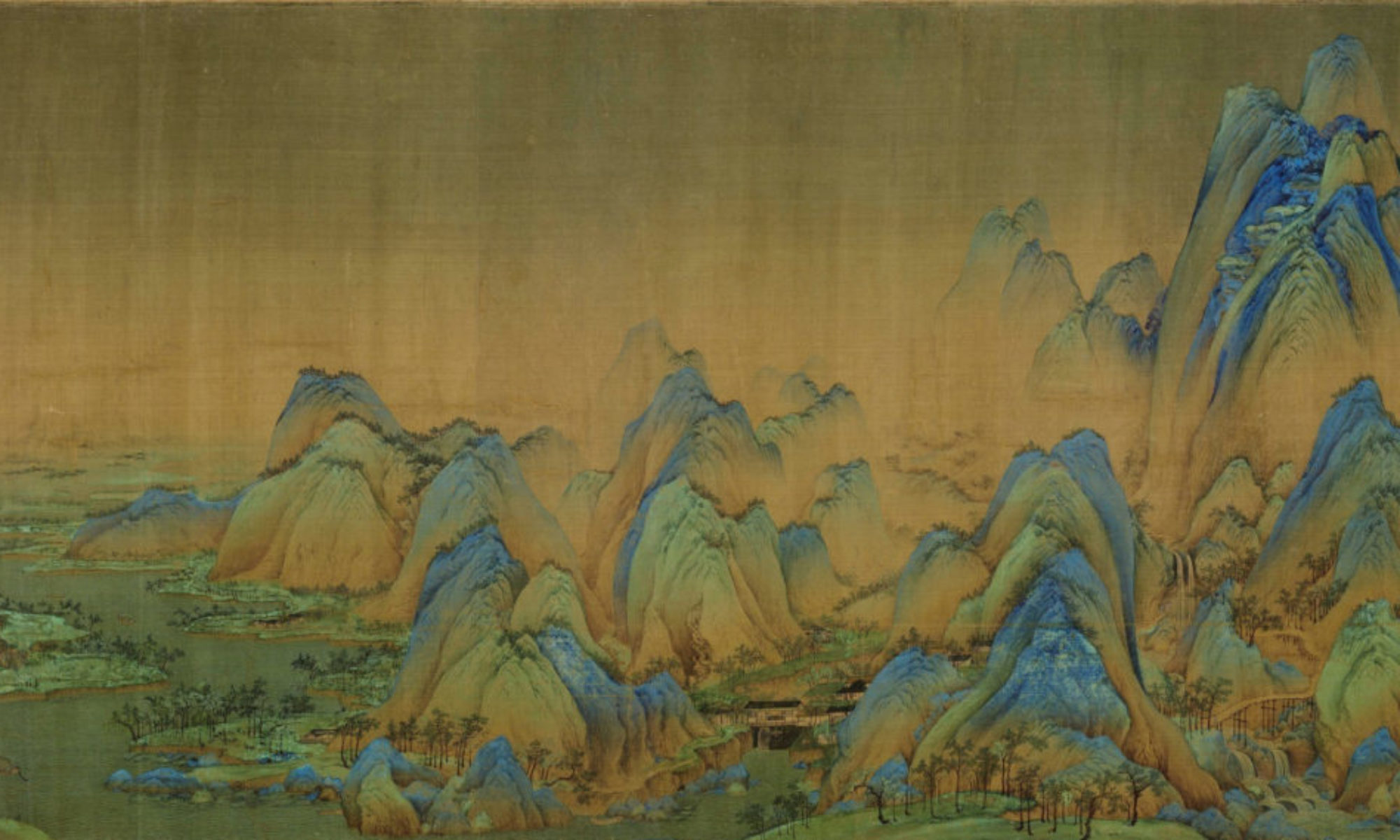Dear Colleagues,
We’re thrilled to invite you to participate in the “Digital Humanities in the Classroom” online workshop, organized by the Chinese Historians in the United States (CHUS). This event is specifically designed for professionals like you who are keen on exploring the transformative potential of digital humanities in higher education.
As technology becomes increasingly important in our daily lives, incorporating digital tools with humanities education can really make teaching and learning more engaging and interactive. This is not just a trend; it is a pathway to innovative education. Our three speakers, each at different stages in their careers, bring a wide array of experiences and perspectives to the table. Their discussion will include topics such as practical strategies for employing digital humanities in everyday teaching, the impact of these tools on student engagement and learning, and meta-level reflections on the state of digital humanities in East Asian studies.
Whether you are a student, an emerging scholar, or an experienced academic, this workshop promises valuable insights and inspiration from our speakers’ innovative experiences with digital tools in both in-person and online classroom settings.
Sincerely,
Dr. Yi Ren
Our speakers:
Dr. Lik Hang Tsui (徐力恆) is an Assistant Professor in the Department of Chinese and History at the City University of Hong Kong. Prior to joining CityU, he worked as a Departmental Lecturer at Oxford, and a Postdoctoral Fellow at Harvard University with the China Biographical Database (CBDB). He specializes in researching middle period China and digital humanities. He convenes the Digital Society research cluster in his faculty to promote interdisciplinary research.
Dr. Paula R. Curtis is a historian of medieval Japan and an active participant in digital communities in and beyond East Asian Studies. She is presently the Yanai Initiative Postdoctoral Fellow with the Department of Asian Languages & Cultures at the University of California, Los Angeles. She is Operations Leader for Japan Past & Present, a global information hub and repository that promotes research and teaching in the Japanese humanities across disciplinary, temporal, and geographic borders.
Shu Wan is a doctoral student in history at the University of Buffalo. He is a digital and disability historian who serves on the editorial teams of Digital Humanities Quarterly and Nursing Clio. He has published and presented numerous articles on the application of digital humanities in academic research and teaching.




